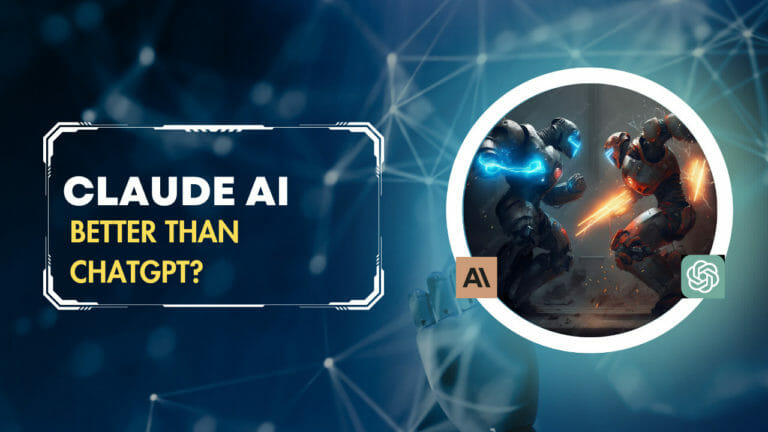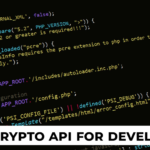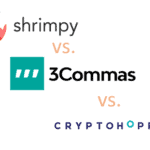ChatGPT is an AI model developed by OpenAI, designed to generate human-like text based on the input it receives. It stands for “Chat Generative Pre-trained Transformer.” Essentially, it’s a sophisticated language model that can understand and generate text in a conversational manner. ChatGPT is trained on a vast amount of text data and uses a deep learning architecture called Transformers to understand and generate responses to prompts or questions. It’s used in various applications, including chatbots, virtual assistants, content generation, and more, to simulate human-like conversation and provide useful responses to users.
The key features of ChatGPT include:
- Natural Language Understanding: ChatGPT has the ability to understand natural language input from users, allowing it to comprehend a wide range of questions, prompts, and conversational contexts.
- Contextual Responses: It generates responses based on the context of the conversation, taking into account the preceding dialogue to provide relevant and coherent answers.
- Conversational Flow: ChatGPT maintains a conversational flow by responding contextually to the user’s queries, enabling fluid and engaging interactions similar to human conversation.
- Multimodal Inputs: It can process various types of inputs, including text, images, and audio, to provide more versatile and interactive responses.
- Adaptability: ChatGPT can adapt its responses based on user feedback and the evolving context of the conversation, improving its performance over time.
- Extensibility: Developers can fine-tune ChatGPT or integrate additional modules to enhance its capabilities and customize its behavior for specific applications or use cases.
- Ethical Considerations: ChatGPT incorporates safeguards to promote ethical use, such as filtering out inappropriate content and avoiding biased or harmful responses.
- Multi-Turn Dialogue: It supports multi-turn dialogue, allowing users to engage in extended conversations with ChatGPT and maintain continuity across multiple interactions.

Table of Contents
How does ChatGPT work?
ChatGPT is based on a deep learning architecture called Transformers, which processes input text and generates output text using a sequence-to-sequence approach. It’s pre-trained on a large dataset of text from the internet and fine-tuned for specific tasks or applications.
What can I use ChatGPT for?
ChatGPT can be used for a variety of applications, including chatbots, virtual assistants, content generation, language translation, and more. It’s versatile and adaptable, making it suitable for a wide range of natural language processing tasks.
Is ChatGPT capable of understanding context?
Yes, ChatGPT is designed to understand context and generate responses that are appropriate based on the preceding dialogue. It maintains a conversational flow by considering the context of the conversation and providing relevant answers.
Can ChatGPT generate responses in multiple languages?
While ChatGPT is primarily trained on English text, it can generate responses in multiple languages with varying degrees of proficiency. There are also versions of ChatGPT trained specifically for other languages, such as Chinese, Spanish, and French.
How accurate is ChatGPT?
The accuracy of ChatGPT depends on various factors, including the quality of the training data, the complexity of the task, and the specific version of the model being used. Generally, ChatGPT performs well in generating coherent and contextually relevant responses, but it may occasionally produce errors or nonsensical output.
Is ChatGPT biased?
ChatGPT strives to be unbiased and impartial in its responses, but like any AI model, it may reflect biases present in the training data. OpenAI takes measures to mitigate bias in ChatGPT by carefully curating and filtering the training data and implementing fairness and transparency guidelines.
Can ChatGPT be used for malicious purposes?
While ChatGPT is primarily intended for positive and productive applications, there is potential for misuse by individuals or organizations seeking to generate harmful or misleading content. OpenAI encourages responsible use of ChatGPT and provides guidelines for ethical deployment to mitigate potential risks.
Also Read ➤ ➤ 100+ ChatGPT Prompts for learning About Any Topic | Try NOW!
Think of ChatGPT like a super-smart friend who’s always there to help you out. When you’re working on college assignments, sometimes you hit a roadblock—maybe you’re stuck on a tricky concept, or you need some fresh ideas to kickstart your writing.
That’s where ChatGPT comes in handy! It’s like having that friend who knows a lot about a wide range of topics. You can ask it questions, get explanations in simple terms, or even brainstorm ideas together. It’s not there to do your work for you, but it can definitely give you a boost when you need it.
Plus, ChatGPT can help you understand things better by breaking them down into easy-to-understand chunks. So whether you’re tackling a tough essay or grappling with a complex problem, ChatGPT can be your trusty sidekick, helping you navigate through your assignments with more clarity and confidence.
The Main Agenda – Chat GPT Prompts for College Assignments
Clarification Prompts
- “Could you simplify the instructions regarding the structure of the essay?”
- “Can you explain what the professor means by ‘evaluate the implications’ in this assignment?”
- “I’m not clear on the citation style required for this paper. Could you provide some guidance?”
- “What exactly does the professor expect in terms of data analysis techniques for the research project?”
- “Could you clarify the difference between a hypothesis and a research question?”
- “Can you explain the significance of ‘contextualizing the findings within the theoretical framework’?”
- “I’m not sure if I should include personal opinions in the conclusion. Could you clarify that?”
- “Could you elaborate on how we’re supposed to integrate primary and secondary sources in our argument?”
- “I’m not clear on the deadline for the submission of the annotated bibliography. Could you confirm that?”
- “What does the professor mean by ‘providing a critical analysis’ in the context of this assignment?”
Also Read ➤ ➤ 20+ ChatGPT Prompts to learn about Bots | Make NOW!
Research Prompts
- “Can you suggest some recent studies relevant to this topic?”
- “I’m looking for reliable sources on the impact of [specific event or policy] on [specific area]. Any recommendations?”
- “Could you help me find scholarly articles discussing [specific topic]?”
- “I need some statistics on [specific subject or demographic]. Where can I find that information?”
- “Can you recommend some reputable journals for research on [specific field]?”
- “I’m interested in exploring [specific aspect]. Could you suggest some primary sources for my project?”
- “I’m struggling to find data on [specific topic]. Any suggestions on where to look?”
- “Could you help me locate government reports related to [specific area]?”
- “I need reliable sources on [specific cultural or societal aspect]. Any leads?”
- “Can you suggest academic papers discussing [specific phenomenon or trend]?”
Conceptual Prompts
- “Can you help me understand the concept of [specific term or theory]?”
- “I’m having trouble grasping the difference between [specific concepts].”
- “Could you explain the underlying principles of [specific methodology or approach]?”
- “Can you clarify the relationship between [specific concepts or variables] in this context?”
- “I’m not sure how to apply [specific theory] to my research. Could you provide some examples?”
- “Can you break down the steps involved in [specific process or analysis technique]?”
- “Could you explain the significance of [specific historical event or cultural practice]?”
- “I’m having difficulty understanding the theoretical framework proposed by [specific scholar]. Can you simplify it?”
- “What are the key assumptions underlying [specific theory or model]?”
- “Can you provide some real-life examples to illustrate [specific concept or principle]?”
Also Read ➤ ➤ 30+ ChatGPT Prompts for LinkedIn Posts | Try NOW!
Brainstorming Prompts
- “Can you suggest some potential research questions for this topic?”
- “I’m looking for ideas on how to approach the introduction of my paper. Any suggestions?”
- “Could you help me brainstorm different angles to explore in this assignment?”
- “I’m struggling to come up with examples to support my argument. Can you offer some ideas?”
- “What are some alternative viewpoints I could consider for this topic?”
- “Can you suggest some creative ways to present the data in my research project?”
- “I need to generate some ideas for the conclusion of my paper. Any thoughts?”
- “I’m having writer’s block. Can you help me brainstorm a catchy title for my essay?”
- “I’m interested in exploring a new perspective on this topic. Any suggestions on where to start?”
- “Can you help me brainstorm potential research methodologies for my study?”
Editing and Proofreading Prompts
- “Could you review this paragraph and suggest ways to improve the clarity of my argument?”
- “I’m not sure if I’ve used the correct tense throughout my paper. Can you help me check?”
- “Can you proofread this section for grammatical errors and typos?”
- “I’m concerned about the flow of my paper. Can you suggest transitions between paragraphs?”
- “Could you check if I’ve properly cited all my sources in the bibliography?”
- “I’m worried that some sentences in my paper are too wordy. Can you help me simplify them?”
- “Can you review my thesis statement and suggest any revisions?”
- “I’m unsure about the punctuation in this sentence. Can you help me correct it?”
- “Could you check if I’ve formatted the headings and subheadings correctly?”
- “I need to trim down the word count of my paper. Can you help me identify unnecessary information?”
Also Read ➤ ➤ 80+ ChatGPT Prompts for Project Managers | DIVE NOW!
Critical Thinking Prompts
- “What are some potential counterarguments to the main thesis of my paper?”
- “I’m struggling to reconcile conflicting viewpoints on this topic. Can you help me analyze them?”
- “Can you help me identify any underlying assumptions in this argument?”
- “I’m interested in exploring the broader implications of this research. Any insights?”
- “How can I strengthen the logical coherence of my argument?”
- “Can you help me evaluate the reliability of the sources I’ve used in my paper?”
- “I need to analyze the limitations of my research methodology. Can you provide some guidance?”
- “What are some potential ethical considerations associated with this research topic?”
- “I’m unsure about the validity of this statistical analysis. Can you help me critique it?”
- “How can I incorporate feedback from peer reviewers to improve my paper?”
Also Read ➤ ➤ 80+ ChatGPT Prompts for Facebook Ads | USE NOW!
Conclusion
In summary, ChatGPT offers indispensable support for college assignments. From clarifying instructions to brainstorming ideas and refining arguments, its ability to understand context and generate coherent responses makes it an invaluable tool for students. With ChatGPT’s assistance, navigating complex concepts and enhancing academic work becomes more accessible, empowering students to excel in their studies.









